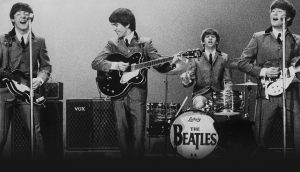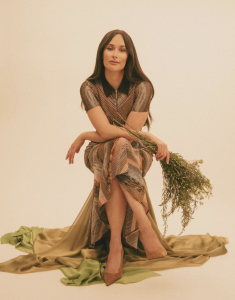June 19, 2014
By Pete Barell
Arts and Entertainment Editor
Director Colin Healey’s “Homemakers” is a (literally) smashing debut – a comedy that ultimately is about finding a home and identity amidst the entropy of life. The film won this year’s Audience Award at the Independent Film Festival of Boston, and made its New York premier at the Northside Festival in Brooklyn on June 16.
Irene (Rachel McKeon) is a rowdy, indie-punk singer with an affinity for chaos, who, after fighting with her bisexual lapsing lover/accordion player Kicky (Molly Carlisle), takes time off from band life to visit an old house in Pittsburgh that she has inherited from her grandfather. She seeks to restore the trash-heap of a home by making it her own mess – painting with her body, breaking old furniture, and swigging bottles of liquor with the help of her long-lost cousin Cam (Jack Culbertson). Slowly Irene feels herself becoming a responsible and settled person, a conflict at odds with her once vagabond way of life.
Healey and McKeon spoke to The Pioneer on June 11 via telephone about filmmaking, music, and the fun of destroying inanimate objects.

The Pioneer (TP): At what point did you decide, “I’m making this film”?
Colin Healey (CH): I moved to Pittsburgh and I thought it was the most beautiful place, but there is this sort of sad story that the city has been split in half and all these houses are left there. I thought that would be a good place to find drama and comedy. Also, I come from a distant, extended family prone to acts of extremism, so I figured it [this kind of story] felt close to me.
TP: Was the house in the film [loaned by] a friend, or did you have to scout for it?
CH: I used to hang out at a bar, the one you see at the end of the movie, with the production designer and prop master, who were my roommates. The guy who owned the bar, Steve, is a sweet guy and he happened to own [the property]. Steve cut a deal. He leased it [to us] for a dollar a month. The art department was able to do whatever they wanted, but we weren’t able to reshoot or do anything like that.
TP: Rachel, when did you start getting involved [with this project]?
Rachel McKeon (RM): I got involved through a casting notice. I was living in Pittsburg doing theater, and I hadn’t really considered the film scene much because there isn’t very much there in terms of “homegrown” Pittsburg films. But then I saw this notice out on a website. I was really drawn to whoever was behind it because I could tell that the person was interesting, creative, and smart. It turned out that [Colin] and I had all of these mutual friends.
CH: I was sharing a really bombed-out studio with one of her roommates.
RM: Yeah, with one of my, like fifteen roommates. I live in a huge house. It was the perfect situation and was such an amazing role. I hadn’t [found much work] in theater, and I hadn’t been offered any films yet, so it was very good timing.
TP: Maybe you’re long-lost cousins?
CH: We actually have the exact same ethnic background. We both come from Jewish families in the Bronx.
RM: But grew up in other places.
TP: Rachel, I’ve heard that you have a very different personality from the character of Irene. How was it transforming into that character? Did you do anything in particular? Join a fight-club?
RM: That would be so cool, but no. The difference between me and Irene is very physical. Her gait, her walk is such a huge thing we worked on. I really had the chance to delve into that before shooting. Colin would have me walk, giving me ideas of how she would walk, and we would tape it and do a couple more, then go back and review it. It was very nice to be able to have that objective eye before shooting. If I wasn’t allowed to see what I was doing, I think it wouldn’t have come out as well. It became clear to me which version of Irene was more captivating on-screen, and which version wouldn’t have been as interesting. It was all very helpful because I showed up on set on day one and already knew where we were going with her [character].
TP: Who and what influenced you artistically for the film?
CH: On early SNL, Gilda Radner had a rock star character that is sort of like Patti Smith. Her name was Candy Slice. We watched all of the Candy Slice [skits]. She’s not really Irene, but she was a reference.
RM: [The character] is somebody who is so [filled with] pure energy. And her energy is up and down. It’s so good.
TP: Were there any particular challenges for the “Homemakers” production?
CH: Well, first off, we didn’t know what we were doing. I mean, we did know how to make good movies, but we didn’t know how people normally make movies. We had to figure out routines for ourselves. For example, one of our production designers had never seen a call sheet before. So we were kind of making up a production process that seemed right for us. That was challenging. Rachel had to do an incredible amount in the film.
RM: It was sort of realizing that we had this incredible, creative balance [going;] that is rare on most professional sets. We had so many visual artists on set, so many creative people aboard who were not traditional filmmakers who went to film school, or actors who had been on TV. We had to preserve that [creativity] while somehow getting through it in an organized way. I think that’s the balance that [Colin] is talking about.
We want to preserve it in the future, to always have our sets feel spontaneous and creative [like this one was]. We, as actors, felt very safe with Colin on set. We could fail. We could screw up. And we could also do something very bold and awesome that really worked. Everybody would just celebrate creativity in general. That was the spirit of the set, and it was very special.
TP: Were there any notable differences, compared to your theater and short film work, Rachel?
RM: It’s funny. I think the biggest difference isn’t feature versus short, although it is incredible to [portray] a character with such a big arc. When you’re shooting a short, it’s usually like a vignette. If it’s very well done, it can have an arc, but a lot of times they’re not that fleshed out. Really the difference is the creative energy. [The “Homemakers”] set reminded me of theater, actually; being in the rehearsal room, and how spontaneous and creative everyone, present, in the moment, alive. It reminded me of the creation of theater, which I think is very special.
TP: Some films have one or two scenes where things are broken or smashed. “Homemakers” has a lot of scenes of destruction. Can you tell us about the making of those scenes? I assume you didn’t have many takes?
CH: It depends.Especially in the big destruction at the end, those shots mostly happened in one take. The shack falling down in the beginning – that was one take. That could have been reset, but it had to be once, time wise. We wanted things to just happen on camera, sort of like a documentary.
TP: Did you have fun smashing things, Rachel?
RM: I did eventually, but I was really scared in the beginning. I knew this was such a big part of Irene’s personality that I needed to conquer – her bravery and her lack of concern for her own body, like her organs; the drinking as well. She drinks a lot and eats like crap. All of those things I could fake, but the smashing of things I really had to take on myself. I love watching it.
TP: Music obviously has a large role in the film. What kind of music do you listen to?
CH: I listen to fun music, but I mostly listen to music that is appropriate for whatever story I’m working on. So, when I was working on Homemakers as a writer, I was listening to a lot of Patti Smith, and like Le Tigre, fun music that Irene would like. Now I’m listening to like Tangerine Dream and [different] music for my next film.
RM: My musical tastes are quite eccentric. But also not at the same time. I’m a huge fan of classical music and I love jazz. I have the musical taste of a fifty year old at the end of the day. I was just raving about Scott Joplin and rag-tag downstairs, and people were just looking at me with glazed looking eyes. I love old Americana, which also drove me to Homemakers. Old folk and Lomax recordings. Gospel choirs. Those are the things that I really collect and treasure.
CH: The thing about Rachel being eclectic is that we have this character of Irene who likes to sing, but she has a thousand different styles. She sings in a punk style, but then we hear her sing “Suwannee River” which is a Stephen Foster song. And then she sings a Polka Song. That’s Rachel. She can do any of those styles because she listens to that music and she loves it.
TP: What are you working on next? I heard a rumor that you two will be collaborating on a new project?
RM: We are. It’s another movie.
CH: It’s going to be the same team of filmmakers, with a couple new people; some new visual artists who I can’t say who they are.
RM: It’s bigger in scope is what I can say. It’s taking that next step.
CH: It’s got the opposite [visual] color palette. It’s about nature and civilization.
RM: The setting is going to be less than grand, to put it one way.



Be First to Comment